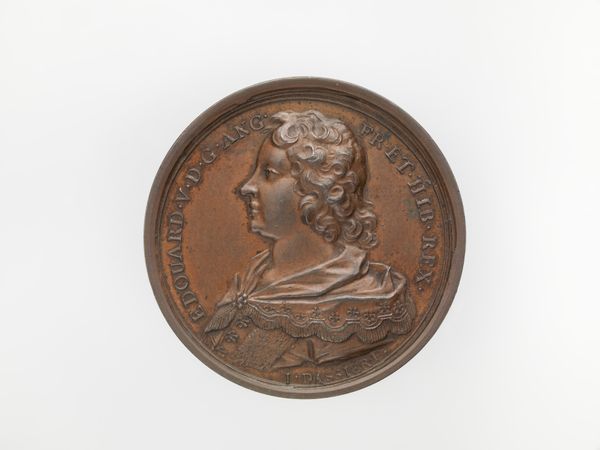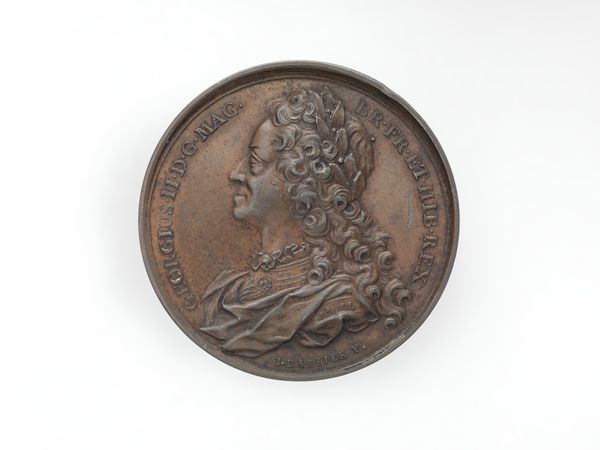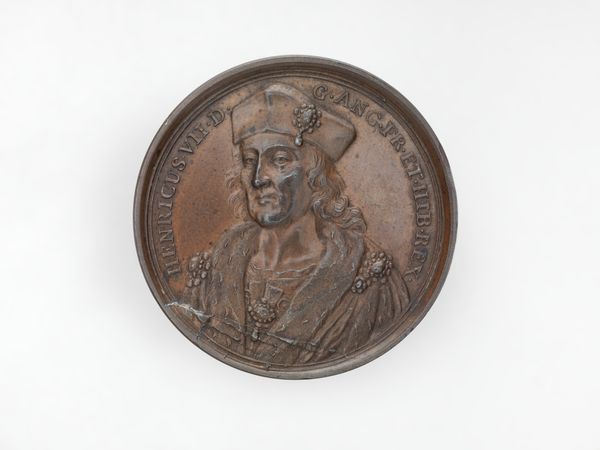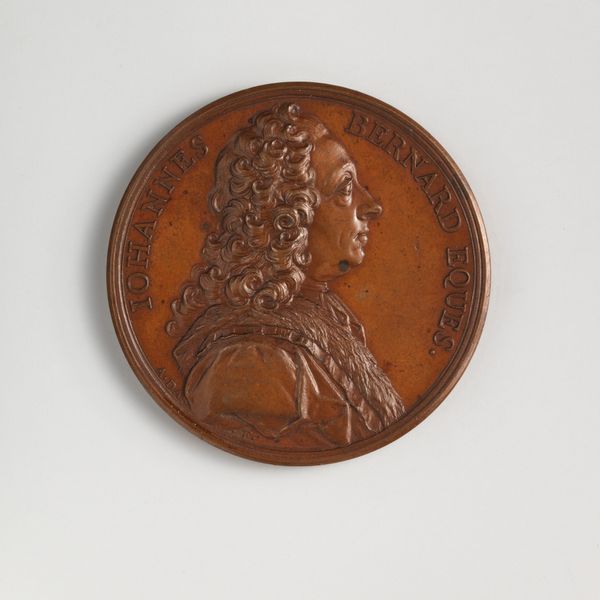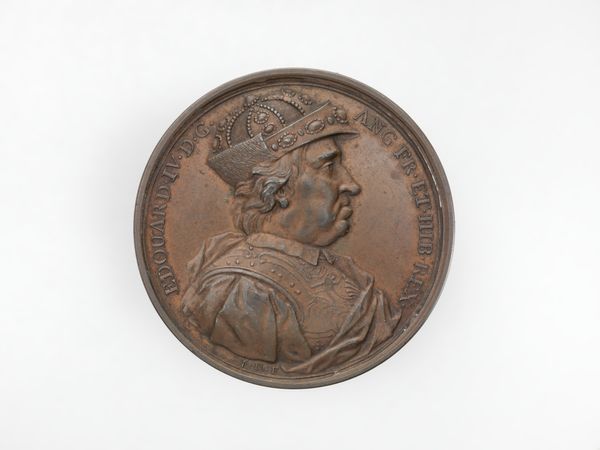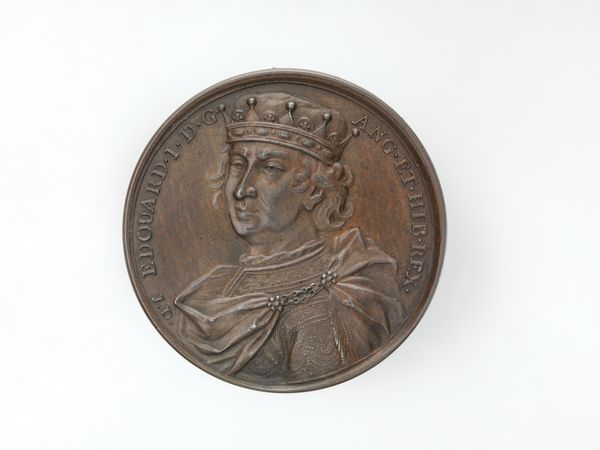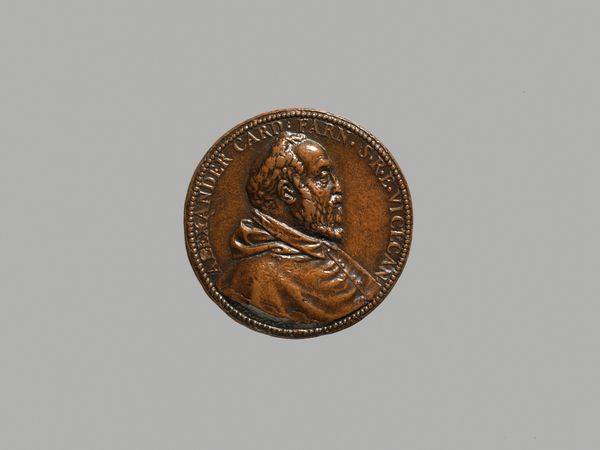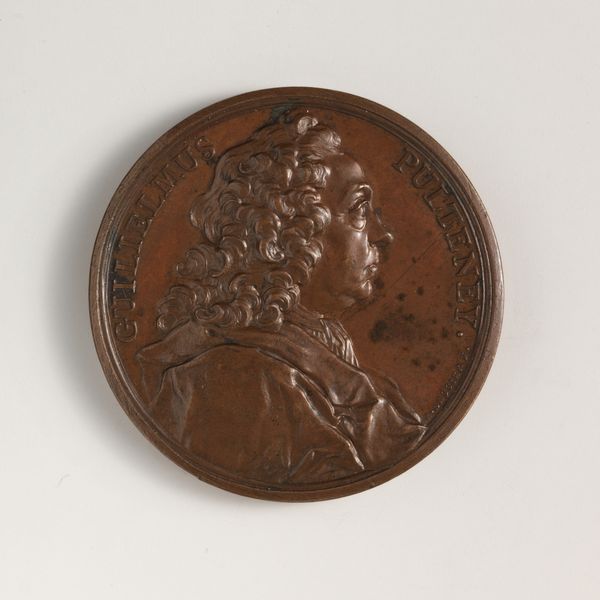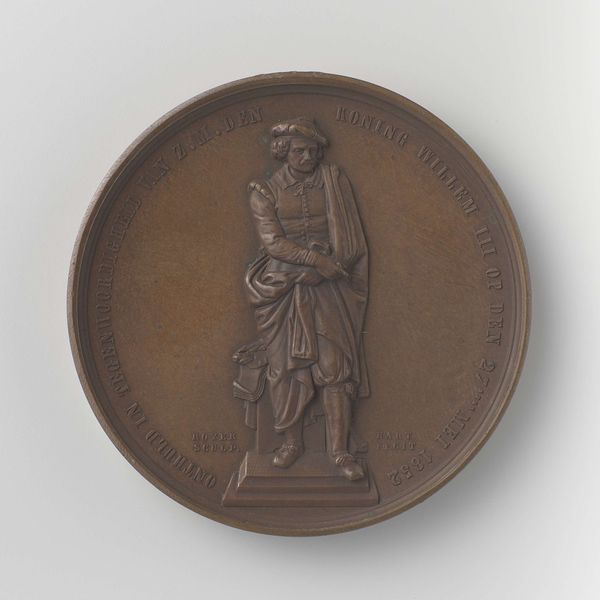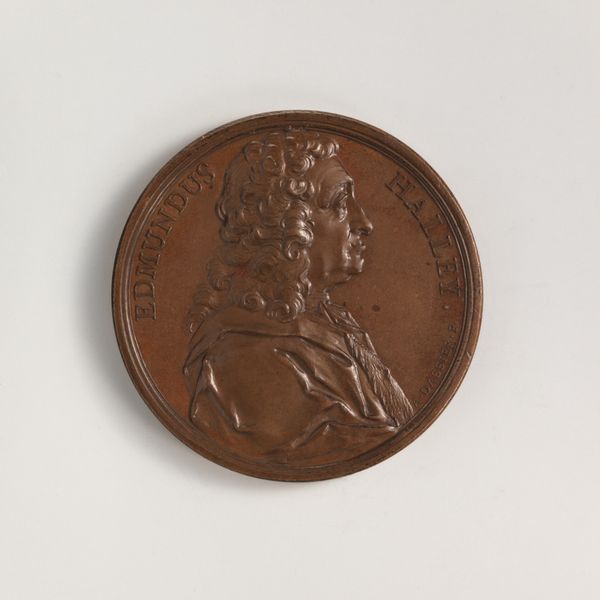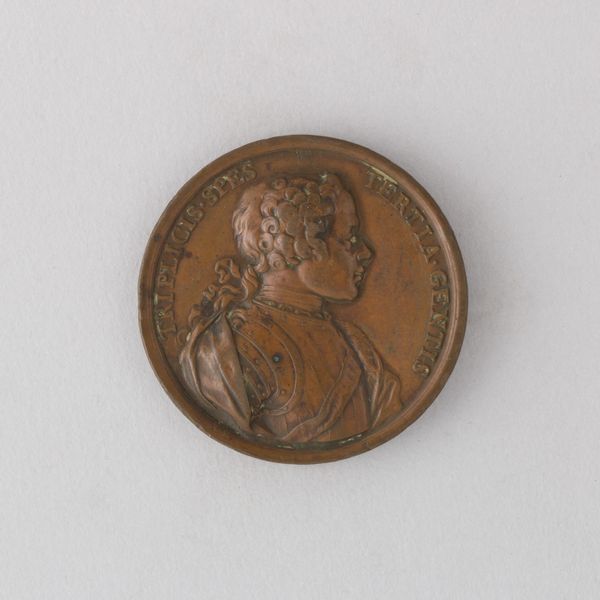
Charles I, from the English Monarchs series 1731 - 1732
0:00
0:00
metal, bronze, engraving
#
portrait
#
baroque
#
metal
#
bronze
#
history-painting
#
engraving
Dimensions: Diameter (confirmed): 4.1 cm (41 mm)
Copyright: Public Domain
Curator: At the Metropolitan Museum, we're fortunate to have in our collection Jean Dassier's bronze engraving "Charles I, from the English Monarchs series," dating from 1731-1732. Editor: Immediately, I’m struck by its classical, almost severe profile, despite the Baroque flourishes in the hair and ornamentation. Curator: Indeed. Dassier's series reflects the 18th-century fascination with historical figures. As a material object, this medal represents not only Charles I, but also the economic system that allowed for its creation and distribution. Consider the labor involved in bronze casting and engraving at the time. Editor: Absolutely, but beyond its production, look at how Dassier utilizes line and form. The sharply defined profile is set against a flatter background, creating a sense of depth and highlighting the king’s features. The inscription bordering the image reinforces its iconic and regal character. Curator: True. However, these medals weren't simply about aesthetics; they served a specific purpose within the marketplace. Dassier aimed to create affordable collectables for a rising middle class eager to engage with history. Its accessibility as a commodity is as vital to its interpretation as its aesthetic qualities. Editor: I can agree with that, though let's not forget the symbolism imbued in the work itself. Charles I's laurel wreath evokes images of Roman emperors, visually aligning him with power and authority, yet subtly hinting at the historical drama and ultimate tragedy of his reign. The piece has a reflective aura as it recalls this powerful figure. Curator: A tragedy linked directly to issues of governance, labor, and resource distribution! The historical weight, intertwined with its existence as a trade object makes the bronze work resonant. Editor: For me, analyzing its texture, the smoothness versus the detailed engraving, conveys volumes on its subject—perhaps alluding to the dual nature of power, both refined and demanding. Curator: In either case, Jean Dassier's portrait is definitely thought-provoking. Editor: Yes, it bridges aesthetics and material history, which definitely provides rich territory for artistic and political reflection.
Comments
No comments
Be the first to comment and join the conversation on the ultimate creative platform.
